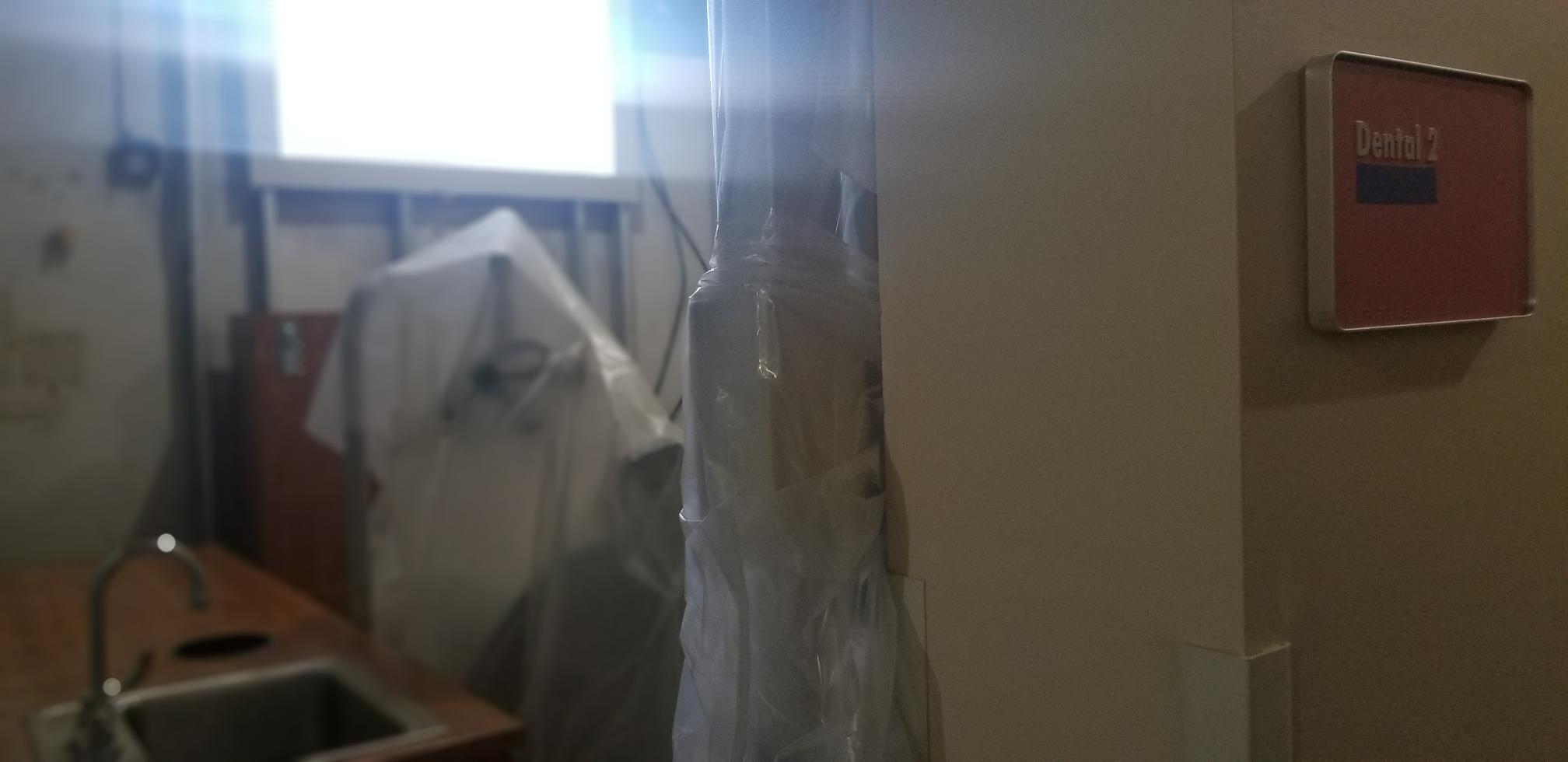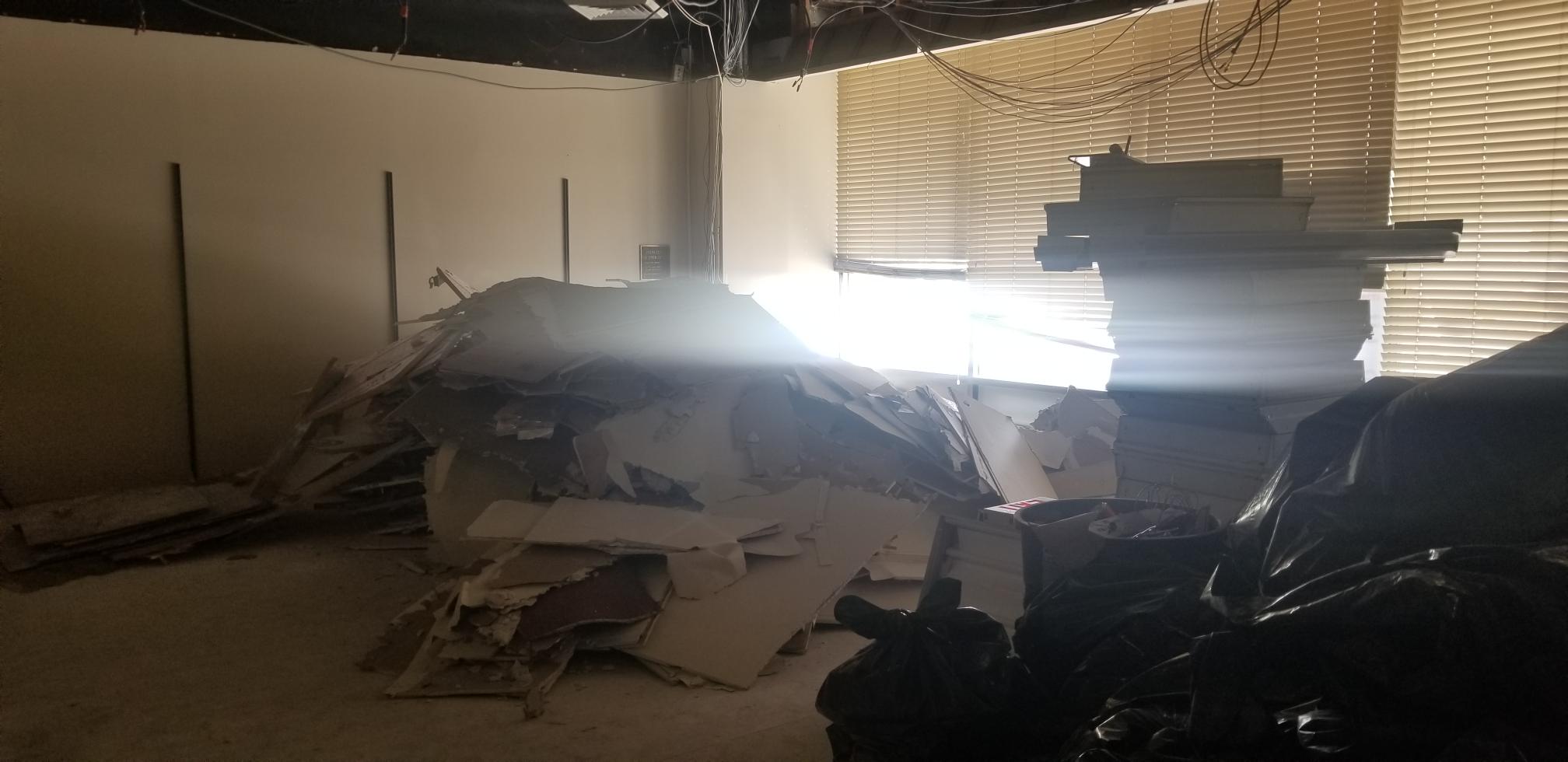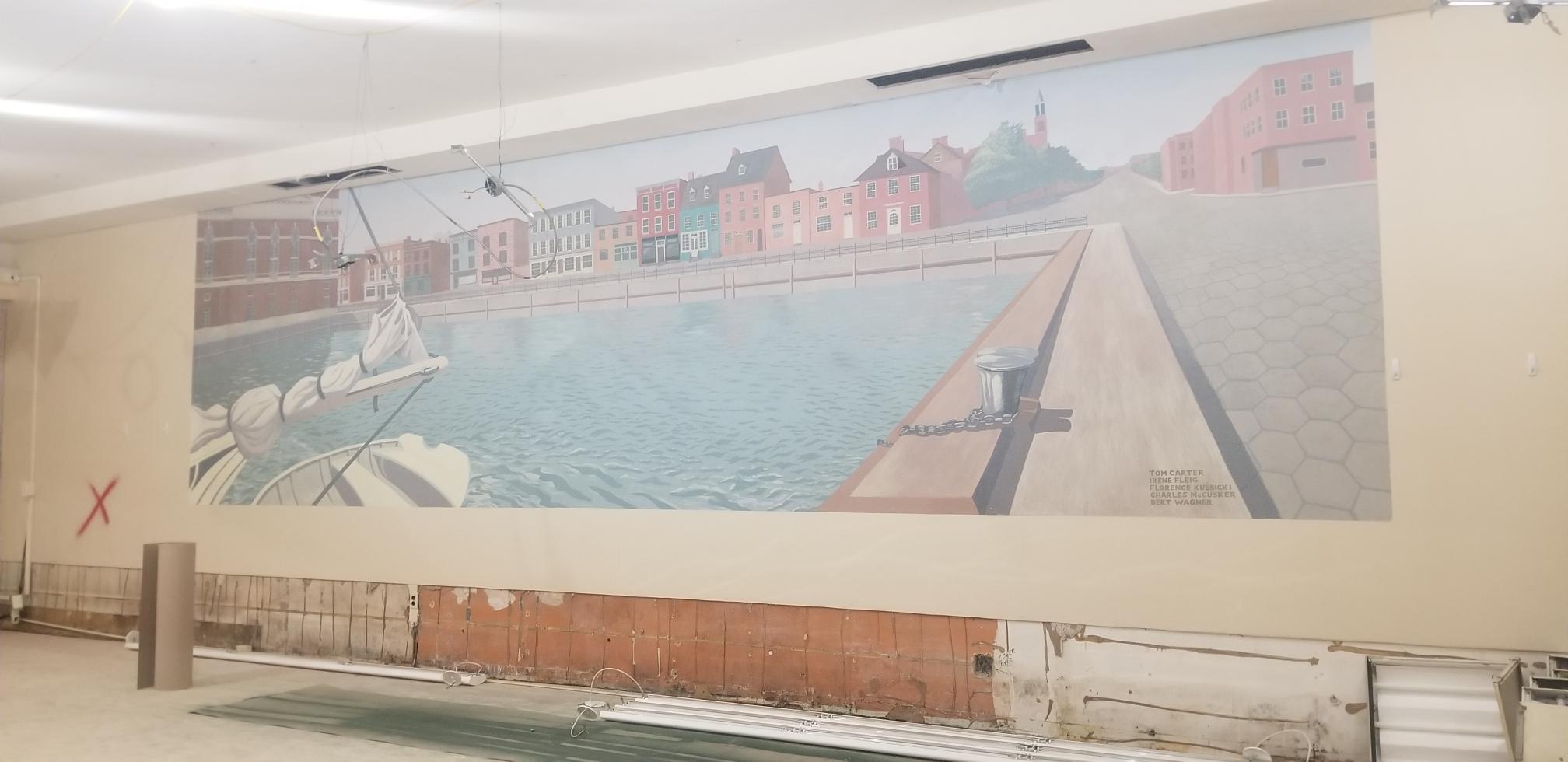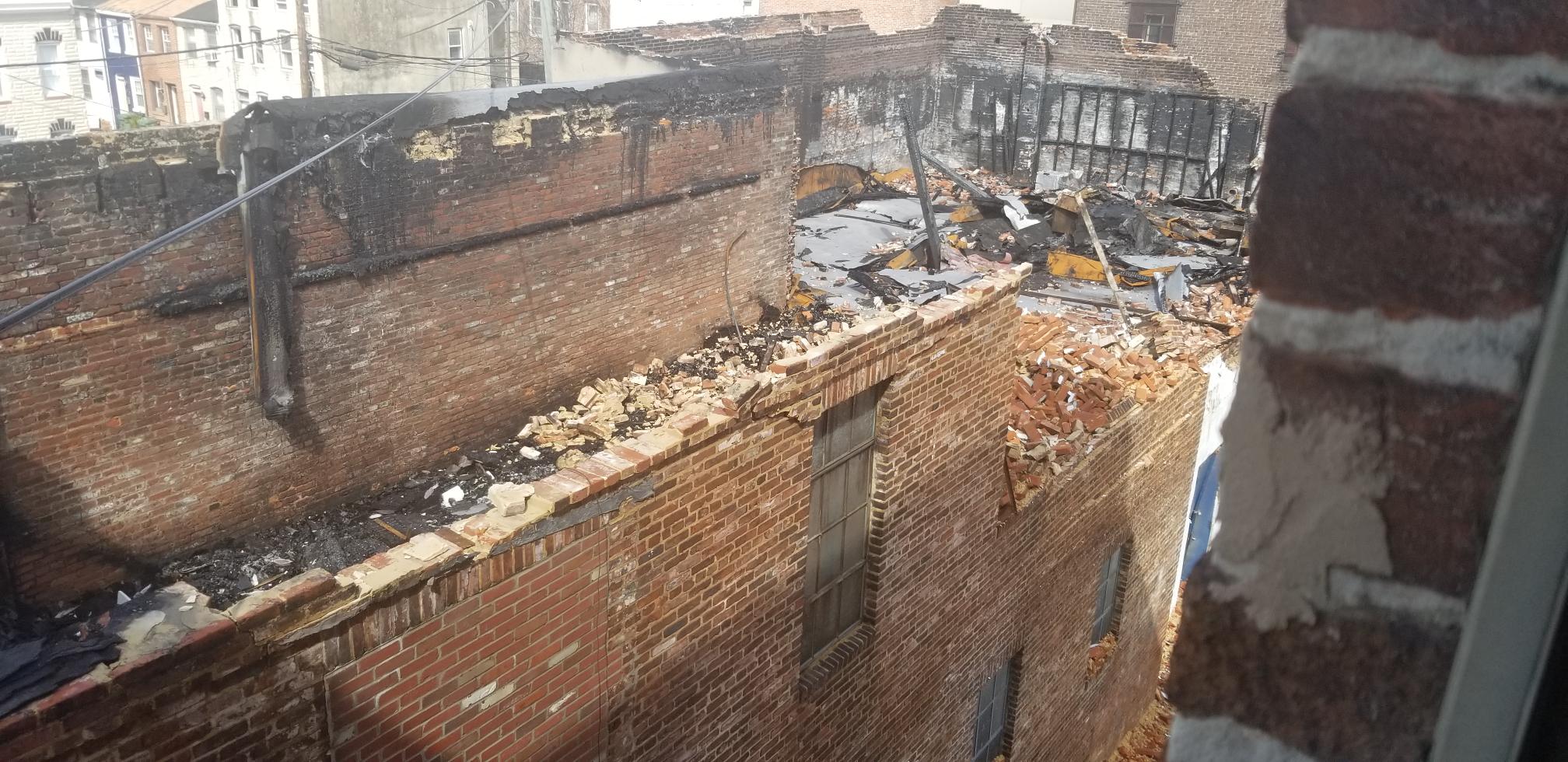After a September fire forced a relocation, Catholic Charities hopes to reopen the Esperanza Center’s S. Broadway facility in early 2020.
More immigrants than before are seeking services from the center, now operating out of Assisi House on Bank St. Most of the recent arrivals are from Guatemala, Honduras and El Salvador – nations where crime, poverty and political unrest are increasingly severe. Outreach & Building Operations Coordinator Giuliana Valencia-Banks said it’s further evidence of the critical need for services.
“If we hadn’t been able to reopen, where would they have gone?” she asked.
Through a partnership, the Enoch Pratt Free Library’s Southeast Anchor and Brooklyn branches now host the center’s youth English classes. Valencia-Banks said this has helped immigrant families trust that it’s safe to get a library card.
Painstaking progress
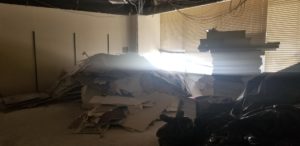
Drywall and debris in front of a reception desk on an upstairs floor of the Esperanza Center. See the gallery below for more photos.
On S. Broadway, Hayes Construction crews have ripped out floors, ceilings, walls and insulation. Everything else has been removed, cleaned, and sorted into what’s salvageable and what’s not. It’s all carried up and down three flights of stairs because water damage disabled the center’s elevator. A new one is on order. Some work had to wait for Budeke’s Paints next door to be torn down, to make sure there would be no structural damage or other complicating discoveries.
Esperanza Center Director Val Twanmoh said the smoke is the biggest reason for the lengthy recovery.
“It permeated every little anything,” she said.
The chemicals in the paint store created a hotter, faster fire, Hayes Construction Project Manager Jeremy Sherfey said. Since it burned on two sides, that chemical heat created pressure that pushed the smoke to unexpected places.
“We’re at the mercy of old construction versus new construction, how things were put together in the past that provide different channels throughout the building,” Sherfey explained. “Smoke has gotten to areas where we didn’t think it was going to travel, on the complete opposite side of the building.”
Now efforts have turned to electrostatic spray. It reaches inaccessible areas and bonds with the smoke’s chemical compounds to neutralize the scent. Sherfey said this approach is much less expensive than rebuilding entirely or finding a new facility.
The impact on clients
Most of the Esperanza Center’s clients speak some form of Spanish. A large sign in the window of the S. Broadway center explains the closure in Spanish and English, and a clear map shows walking directions to the Assisi House. But some immigrants were never taught how to read in their own language.
“We’re there working every day, and the number of people who still come up to that front door and pull on it…” Sherfey paused. “It brought a whole new perspective to me for the service and outreach that Esperanza provides, to give these folks coming to our country the ability to make themselves and their lives better than what they had in their own country.”
Space has been a challenge, but Twanmoh and Valencia-Banks said Rev. Bruce Lewandowski, who ministers to the Spanish-speaking population in the area, has been profoundly welcoming. Assisi House’s first-floor hall is now the Esperanza Center’s adult English class space, health clinic, and client services hub. With temporary walls for privacy, two doctors see immigrant patients for non-emergency conditions. The center’s staff navigates the space to help with forms, translations, important letters, notary services, crime reporting, employment, school enrollment, benefit applications and housing.
Miwa Yoshido, 31, was a midwife in Okinawa, Japan, and is learning more English because she wants to do the same work in Cambodia and Africa.
“After the fire, I didn’t have any difficulties taking classes at the Assisi House because they are providing as good quality as they were doing at the [S. Broadway] Esperanza Center,” she said in English.
Twenty-two-year-old Maria dos Santos and her 15-year-old sister came to the U.S. from Angola as refugees about eight months ago. The only thing she could say in English was “good morning.” Since October, while her sister has been in school, dos Santos has walked or taken the bus from Highlandtown to the library or Assisi House for classes three days a week. She said speaking better English helps her feel more comfortable and safe here, and she can trust the people at the Esperanza Center. Her goals have also changed.
“When I was little, my goal was to be a secretary,” she said without a translator. “Now I’ve changed my mind. I want to study medicine. If I’m a nurse or a doctor, I can choose to work with children.”
Twanmoh said the next step for staff is to expand the health clinic in response to demand, and hire a part-time medical assistant to help see more patients. She said the summer youth program will be at full capacity because the center has arranged for transportation between Assisi House and John Rurah Elementary School.
The power of partnerships
Twanmoh is effusive about the partners who have helped the Esperanza Center continue its services since the fire. Assisi House, Sacred Heart of Jesus Parish, Johns Hopkins Medical Center, the Hopkins Office of Critical and Event Preparedness and Response, the library system, and Catholic World Relief Services have all given space, equipment and other invaluable assistance.
Hayes Construction has been involved since the building on Broadway was still smoldering. For Sherfey, who spent three years in seminary training before joining his father in the construction business, this job in particular has been a chance to turn compassion into action.
“It means the world to me to be involved with it,” he said. “I just can’t wait to get you guys back open so you can serve as you were before.”
The S. Broadway location may reopen in January.

